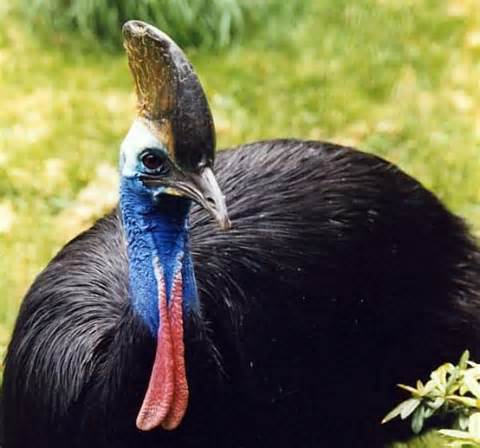
Casuarius unappendiculatus
TAXONOMY
Casuarius unappendiculatus Blyth, 1860, aviary in Calcutta.
OTHER COMMON NAMES
English: Northern cassowary; French: Casoar unicaronculй;
German: Einlappenkasuar; Spanish: Casuario Unicarunculado.
PHYSICAL CHARACTERISTICS
Height 65–69 in (165–175 cm); weight females 128 lb (58
kg); males 81 lb (about 37 kg). A large cassowary with coarse
black plumage, a tall casque, a colorful neck, and one central
wattle.
DISTRIBUTION
Northern New Guinea, from western Vogelkop, West Irian, to
Astrolabe Bay, Papua New Guinea, and on Satawati, Batanta,
and Japen islands.
HABITAT
Mostly lowland areas of rainforest and swamp forest, up to
1,600 ft (490 m).
BEHAVIOR
Assumed to be similar to other cassowaries.
FEEDING ECOLOGY AND DIET
Feeds on fallen forest fruits.
REPRODUCTIVE BIOLOGY
Birds in breeding condition have been collected in May
and June, but nothing else has been reported about its breeding.
CONSERVATION STATUS
The status of the cassowary is uncertain. It requires large areas
of undisturbed rainforest to flourish. It is hunted and
snared for food, but where large tracts of forest remain, it
is secure.
SIGNIFICANCE TO HUMANS
The cassowary is incorporated into the mythology of the indigenous
peoples, but it is still hunted by them, and the chicks
captured, to be kept in pens in the villages until they are big
enough to eat.
Other popular Animals
Photo Gallery of - One-wattled cassowary




 Animalia Life
Animalia Life